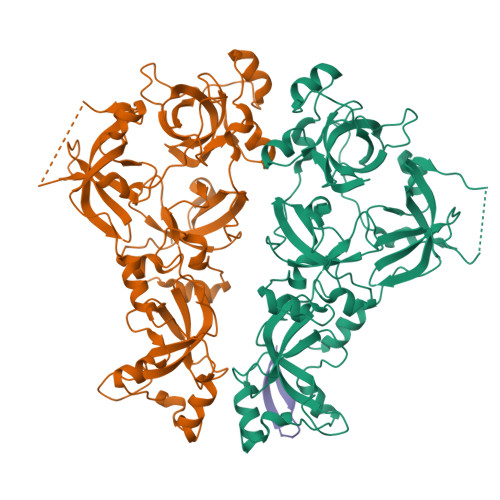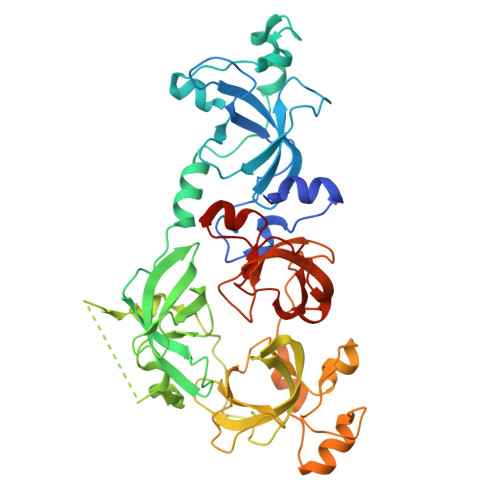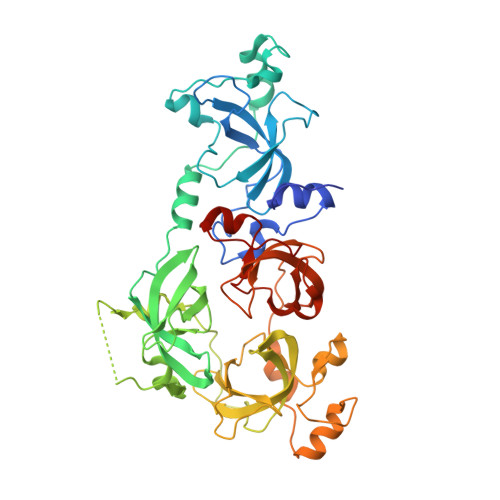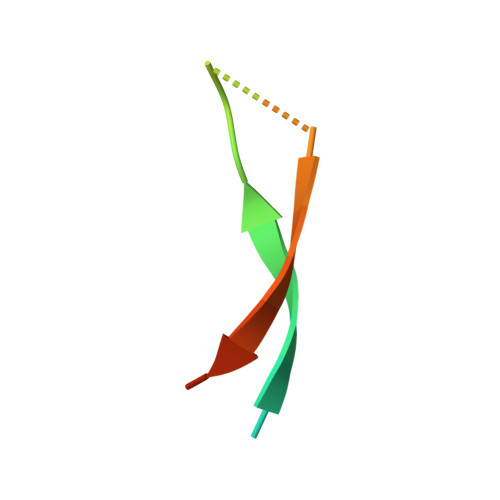Structural Basis for Targeting the Chromatin Repressor Sfmbt to Polycomb Response Elements
Alfieri, C., Gambetta, M.C., Matos, R., Glatt, S., Sehr, P., Fraterman, S., Wilm, M., Mueller, J., Mueller, C.W.(2013) Genes Dev 27: 2367
- PubMed: 24186981
- DOI: https://doi.org/10.1101/gad.226621.113
- Primary Citation of Related Structures:
4C5E, 4C5G, 4C5H, 4C5I - PubMed Abstract:
Polycomb group (PcG) protein complexes repress developmental regulator genes by modifying their chromatin. How different PcG proteins assemble into complexes and are recruited to their target genes is poorly understood. Here, we report the crystal structure of the core of the Drosophila PcG protein complex Pleiohomeotic (Pho)-repressive complex (PhoRC), which contains the Polycomb response element (PRE)-binding protein Pho and Sfmbt. The spacer region of Pho, separated from the DNA-binding domain by a long flexible linker, forms a tight complex with the four malignant brain tumor (4MBT) domain of Sfmbt. The highly conserved spacer region of the human Pho ortholog YY1 binds three of the four human 4MBT domain proteins in an analogous manner but with lower affinity. Comparison of the Drosophila Pho:Sfmbt and human YY1:MBTD1 complex structures provides a molecular explanation for the lower affinity of YY1 for human 4MBT domain proteins. Structure-guided mutations that disrupt the interaction between Pho and Sfmbt abolish formation of a ternary Sfmbt:Pho:DNA complex in vitro and repression of developmental regulator genes in Drosophila. PRE tethering of Sfmbt by Pho is therefore essential for Polycomb repression in Drosophila. Our results support a model where DNA tethering of Sfmbt by Pho and multivalent interactions of Sfmbt with histone modifications and other PcG proteins create a hub for PcG protein complex assembly at PREs.
Organizational Affiliation:
European Molecular Biology Laboratory, 69117 Heidelberg, Germany.


















